
You still shouldn’t buy a foldable. 2020 has seen tech move leaps and bounds, with Samsung especially releasing the excellent Galaxy Z Flip and, more importantly, the Galaxy Z Fold 2. After three months using the $2,000 foldable, I’m thoroughly convinced that this technology is the future, but it’s not ready yet. Let’s talk.
Hardware |
Without a doubt the most impressive thing about the Samsung Galaxy Z Fold 2 is how it’s built. Really, there’s just nothing else on the market today that even approaches what Samsung has created here. “Standard” smartphones such as the Note 20 Ultra, iPhone 12 series, and others are very well built and have a lot of polish, but the Galaxy Z Fold 2 delivers a piece of hardware that’s doing something incredibly futuristic while also retaining that same level of build quality.
This becomes immediately apparent from the moment you pick up the Fold 2. The brushed metal frame, the glass back, and the surprisingly stiff hinge all come together in a wonderful way. Many may argue that no phone is worth $2,000, but Samsung’s build quality here legitimately feels worthy of that price tag.
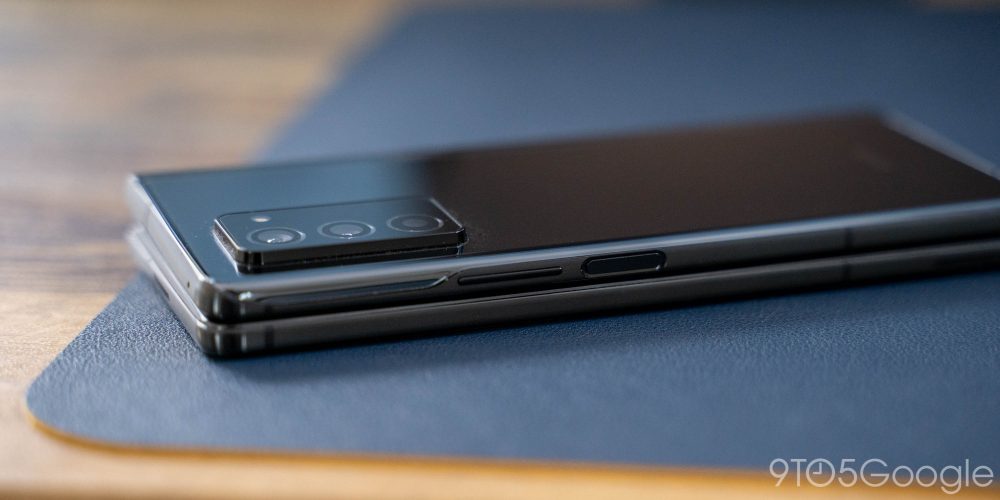


That doesn’t come without caveats, though. The Fold 2 is an awkward shape as its tall footprint can feel odd in your pocket. It’s also very thick and heavy. I’ve had multiple occasions where my Fold 2 tried to slip out of my pocket. On the bright side, that thickness and weight feel pretty good when actually using the phone. I’ve really enjoyed using the candybar shape of the Fold 2 when closed. It’s nice for scrolling Twitter or handling smart home controls with one hand. The super-narrow shape is awkward for apps, but it feels really nice in the hand in part because the thickness gives you extra grip on the sides. As a side note, the side-mounted fingerprint sensor works well in this design, though I do often end up dropping my notification shade by mistake because of the low placement.
When unfolded, the weight is distributed impressively well, too. Plus, the size of the inner screen is just right. There’s enough space to enjoy apps on a larger canvas, multi-task, or enjoy videos and games, but it’s not so big that you always need both hands to use it.
Months later, I’m still often impressed that this concept lives, and even more so that it feels this nice day in and day out. I continue to be blown away by what Samsung has been created, and I’m even more curious to see how it will be topped.
The real question of foldables isn’t if they’re possible or even if they’re any good — the question is how they hold up. The original Galaxy Fold famously and spectacularly failed there, but the Galaxy Z Fold 2 is another story entirely.
Over the past three months using the Galaxy Z Fold 2, I’ve found some areas where I’m impressed and others where I’m not. I haven’t really treated the Galaxy Z Fold 2 with perfect care. It’s sustained a couple of drops, and I have mostly been using it without a case. While it’s held up in fundamentally good ways and proven that it’s leaps and bounds better than the original Fold, Samsung still has a lot of work to do.
Starting off on a good note, the screen is still is pretty good shape! I don’t have any issues — at least none I can see — with foreign debris underneath the flexible display like was so common with the original. There are also no “dents” in the assembly, just scuffs on the screen protector.

The hinge, too, is holding up well. However, it doesn’t feel like it did on day one. When I first got the Fold 2, the hinge felt stiff, almost to a fault. Over the past three months, the hinge has loosened as it’s been broken in. It no longer feels tight but, instead, very smooth without much resistance. That’s not really a bad thing as it’s much easier to open and close the phone, just like how a laptop’s hinge loosens over time. The only reason this worries me is that it makes me wonder how the hinge will hold up over the next few months and, really, the next few years. I fully intend to pick up the Galaxy Z Fold 3 in 2021, but most people buying the Fold 2 won’t be in the same boat. This hinge needs to be able to last, and loosening up this much in three months worries me just a bit given how the original Fold’s hinge didn’t fare very well over time.
It’s important to note how Samsung fixed this all, too. The Galaxy Z Fold 2 adopts two little “caps” at the top and bottom of the display that prevent dust and debris from getting through, as well as some brushes within the hinge that also keep everything out. It’s pretty remarkable how well this works compared to last time around.


Three months in, I’m satisfied with how the Fold 2 has held up, aside from the screen protector, which I’ll get to later. Samsung still has room for improvement, but the Fold 2 is an impressive accomplishment that is great news for every future foldable. It proves that this form factor is viable for actual people.
Displays |
One of the big deal-breakers of the original Galaxy Fold was the outer display. It was a tiny 4-inch panel that was just too small to be useful. The Galaxy Z Fold 2 fixed that with an admittedly narrow, but very usable 6.23-inch display. This display comes in handy for one-handed tasks — shooting off a text while walking, picking a song on Spotify, checking the weather, or even keeping an eye on Twitter. When I first started using the Fold 2, the split between the outer display and the inner display was one of the first things that really showed me how using a foldable is different.
I found myself using the outer display quite a lot, perhaps up to 40% of the time I was actually using the phone. That’s because it’s the convenient display, the one that’s most readily available. It’s certainly not the point of this device, but this display manages to remain useful.
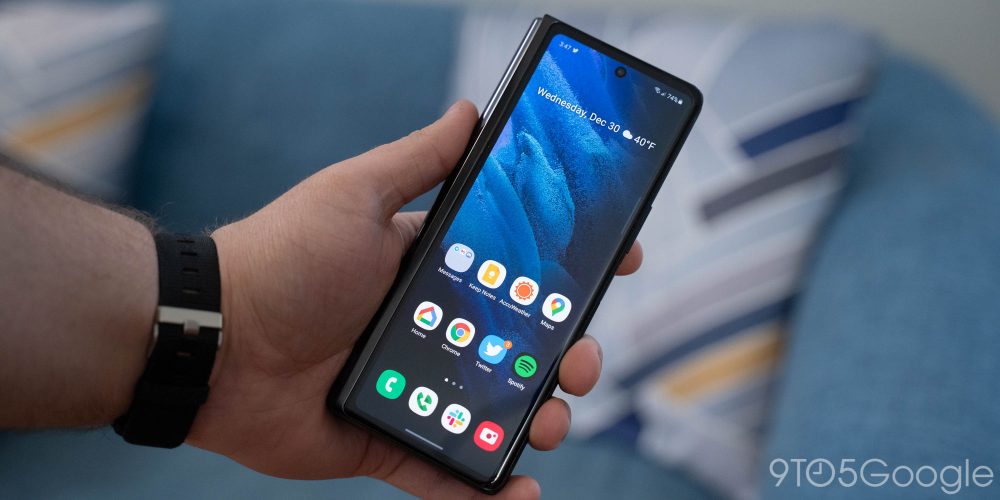
While this outer display is a major improvement, it’s still flawed. The narrow aspect ratio plays with some apps and especially games in really funky ways. During the pandemic, I’ve been using the Walmart app for pickup quite a bit, and that app always messes up search when on the outer display. The Wyze app displays camera feeds with some bizarre scaling. These are just a couple of examples and neither are deal-breakers, but they are slightly frustrating.
On a final note, it’s also worth remembering the outer display’s refresh rate. While the inner panel is a high-end 120Hz panel, the outer one is capped at 60Hz. It’s not a big deal in my opinion, as it still gets the job done just fine and doesn’t even feel jarring when switching back and forth between the two panels.
The real story of the Galaxy Z Fold 2 is the 7.6-inch inner display. The larger canvas has a smooth 120Hz refresh rate and room to enjoy anything and everything you’re doing. Most people use this display for multitasking, but I’ve found it useful even when it’s only showing one app. Generally, I’m using my phone to catch up on articles from Feedly, write down my thoughts on Google Keep, or browse a website on Chrome. The Fold 2’s larger screen enhances all of these use cases for me. On the rare occasions I am using more than one app on this screen at once, though, I can say it’s definitely a better overall experience where things don’t feel nearly as cramped.
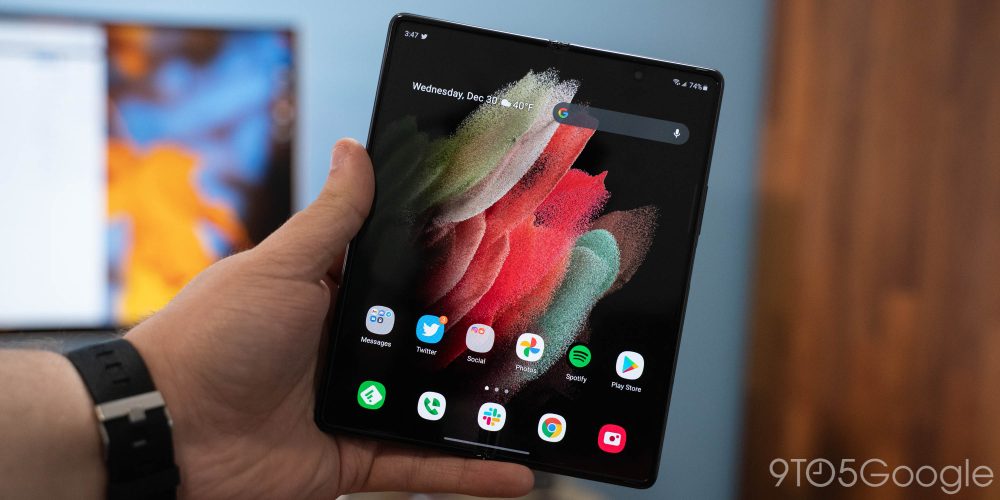
Another place I’ve really enjoyed the inner display has been for content consumption, games in particular. Some native games don’t adapt well to the odd aspect ratio of the Fold 2 very well, but others do. It’s pretty hit or miss. As a huge Stadia player, I’ve been happy with the extra screen space that the Fold 2 delivers when streaming games, though I do wish Google could adapt to the aspect ratio here. The same limit applies to other streaming services too, unfortunately. In any case, just the extra screen space makes gaming on the Fold 2 a pleasure, and from what I hear, it’s even better for emulators.
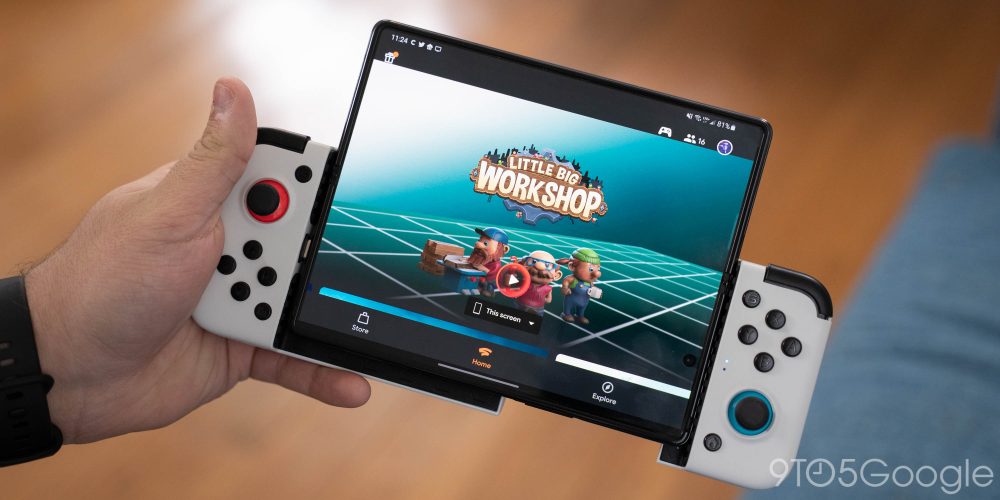
Unfortunately, the inner display has the same issues as the outer one because of its aspect ratio, except on the inner display, the problem is much more apparent. Often with the Fold 2’s inner display, you’ll find that apps are just blown up in size and don’t actually scale properly to take advantage of the canvas.
The best example of this is probably YouTube. Generally while using the super-popular app on a Fold 2, you’ll only see one video at a time while scrolling subscriptions or searches. It’s a huge waste of space. That’s only when you use the phone in portrait mode, though. Flipping the Fold to landscape pushes the far more optimized UI that YouTube shows on tablets.


This happens on more than one app — Spotify is another good example. It’s a shame, too, because using the Fold 2 in landscape mode isn’t nearly as comfortable and emphasizes the crease running down the center. In a future software update, I would love to see Samsung force apps into this mode even in portrait.
Speaking of the crease, let’s touch on that. While it may seem obvious at first, three months in, I’ve essentially forgotten about the little divot. I notice it on occasion, but it genuinely doesn’t bother me at this point. I do hope it’s something that Samsung eventually figures out a way around, but by no means should it be a deal-breaker for anyone.
There is so much good about the Galaxy Z Fold 2, but the screen protector installed out of the box takes things down a notch. The outer display has a thin plastic screen protector that, personally, I don’t mind. It gets scratched relatively easily, but it’s not uncomfortable to use, and so far, I’ve not taken it off just because I’d rather scratch up some plastic than the glass itself. I’m a screen protector guy, and I’m not ashamed to admit it.
However, the story is very different on the inside. The much larger inner display has a thicker, almost rubber screen protector that is just absolutely awful. It scratches very easily to the point where my inner display is covered in little hairline scuffs. The oleophobic coating on that screen protector is also barely there, leaving the screen sometimes feeling almost sticky.
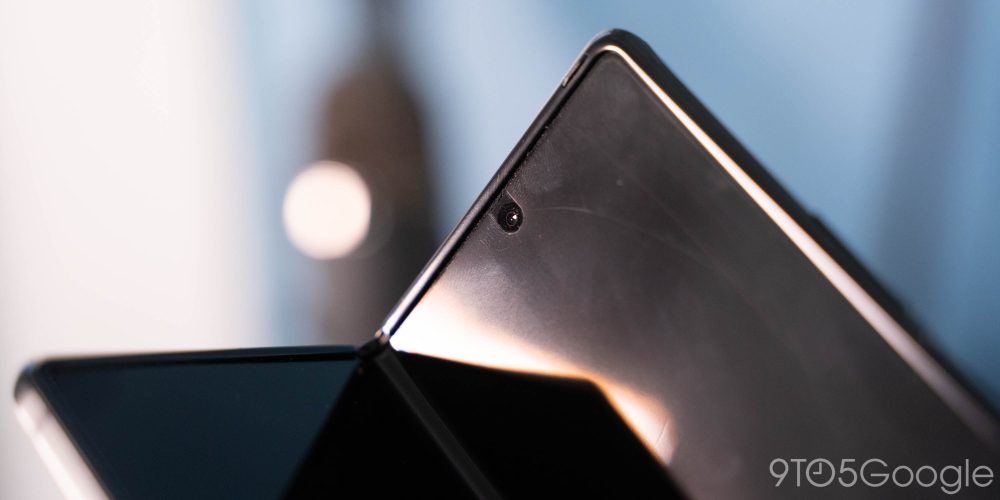
If you’ve looked around at other reviews and even some of the people that were crazy enough to buy this product personally, you’ll hear some similar stories. A lot of those people have taken off the inner screen protector to find that the ultra-thin glass underneath feels better and is pretty much at the same level of durability. Sounds good right? Yeah, it really does, and it’s had me tempted to remove this screen protector on multiple occasions.
However, I still haven’t. Despite this screen protector being covered in little hairline scratches, I haven’t removed it. Why? Samsung directly says that people shouldn’t remove this screen protector, and I’ve got to believe that they have a reason for that even if it’s obvious that this layer isn’t integral to the device. In any case, I’d much rather deal with fingerprints, oils, and hairline scratches on this rubbery plastic than I would on the actual display underneath.
What I can say, though, is that I basically pray that Samsung won’t be using this again next year. The Galaxy Z Fold 2 was all about fixing past mistakes, and Samsung fixed a ton of them, making a product that’s almost there. The Galaxy Z Fold 3 just needs to fix this inner display and how it’s protected to make a phone that I can actually tell people to buy.
Software & Performance |
The Galaxy Z Fold 2, like any modern Samsung device, is using the company’s One UI skin. As of December 2020 when I’m writing this review, that’s One UI 2.5 based on Android 10. The short and sweet of One UI is that it’s… fine. Samsung’s design focuses on keeping things relatively simple without giving up on features. You’ll find plenty of added multitasking options, some neat features, and a handful of Samsung apps that you’ll either find handy or ignore completely. The frustrating part is that Samsung spoils this otherwise decent experience by throwing a bunch of ads into the mix. They’re all over Samsung’s apps and even when you think you’ve turned all of them off, plenty still appear in apps and through incessant push notifications.
I paid $2,000 for this phone, Samsung. You should not be showing a single ad on this thing literally anywhere.
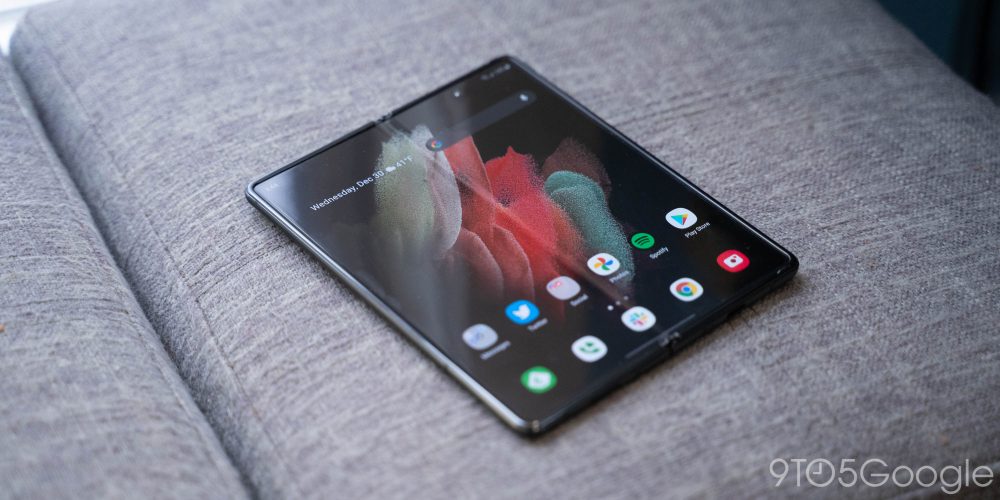
That rant aside, though, I am glad to see that Samsung seems to be treating its 2020 foldables with more priority compared to last time around. The Galaxy Z Fold 2 is on track to get its Android 11 update pretty soon, at least based on when the betas were first launched. That’s stellar progress compared to last year, when the Fold’s Android 10 update was months behind the Galaxy S and Note lines.
As far as software changes Samsung made to improve the experience on Fold 2 specifically, they feel fully integrated and don’t really draw undue attention to themselves. For instance, Samsung’s improved multitasking features on Fold 2 are in the same places as they’d be on a regular Samsung phone, and they just work. App Pair is a really useful idea, and one I’d certainly be using if I used multiple apps at once on a more regular basis.
Software on the Fold 2 is pretty much the same as on Samsung’s other flagships, and I’m glad that performance is in the same boat. Using the Galaxy Z Fold 2 feels just like using the Galaxy Note 20 Ultra, which is to say it’s one of the fastest Android smartphones I’ve ever used all without breaking background apps. It’s just super fast, even when the 120Hz inner display isn’t being used.
Three months in, too, performance hasn’t lessened. This phone feels just as fast as it did on the day I unboxed it, which is something that I often can’t say about other smartphones. It’s impressive, really, how Samsung has gone from killing the performance on their phones over time to being one of the best in the industry. Part of that, though, rests on the powerful pair that is the Snapdragon 865+ processor and 12GB of RAM.
As I’ve alluded to several times so far, one of the biggest problems of the Galaxy Z Fold 2 is aspect ratios. Android apps are pretty decent at scaling to fit any phone, but the Fold 2 is using two aspect ratios that aren’t often seen. Right now, most phones sit somewhere between 18:9 and 21:9. The outer display of the Fold 2 is 25:9, while the inner is 5:4. Both of those are not present on just about any other smartphone or even tablet, which means that app developers haven’t optimized for them at all. The Accuweather app, as seen below, is a good example of this.
This isn’t really a fault of Android, but through APIs and recommendations from Google, I think the platform could improve how it handles the unique aspect ratios that foldables are going to bring to the table. This won’t change overnight, but Google and Samsung both could play an important role in fixing this problem. Then again, I’m not sure Samsung cares enough just yet. Despite this being the company’s own device, some apps are still laughably bad. Samsung SmartThings puts tiles into rows, which, especially because of ads, means wasting space on smaller rows. The Galaxy Store also shows apps in rows rather than taking advantage of the wider screen to show another column. I wouldn’t call these apps offensively bad, but Samsung certainly could have put some more effort in.
Battery Life |
The 4,500 mAh battery in this phone is certainly acceptable. Most days, it lasts through a full day with ease. On average, I’ll go to bed with somewhere between 35% and 50% of my battery remaining. Much of that depends on how I use the device, though. If I’m using it all day for reading, writing, or consuming content, the inner display sucks power quickly. I’ve killed the Fold 2’s battery by 5 p.m. on multiple occasions. On other days, though, where I’m using the outer display more often for lesser tasks, I’ll end with upwards of 40% in the tank when it’s time for bed. Screen on time is a very poor metric to judge this device by for that reason.

Still, I think most people will be satisfied. The battery can last long enough, and when it does come time to charge, 25W USB-C is fast enough, and Qi is on board for convenient overnight top-ups.
Cameras |
Over the course of just a few months in 2020, Samsung made absolutely massive strides in the camera department. I couldn’t have been less satisfied with the Galaxy S20 lineup, but the Note 20 Ultra turned things around. I’m so glad to see that the Galaxy Z Fold 2 is following in the latter’s footsteps. The trio of 12MP sensors don’t quite measure up to the Note 20 Ultra, but they take a very good photo in most scenarios.
Samsung’s shots are still a little oversaturated and don’t handle motion well, but I’m more often satisfied than not. Below are some of my favorite shots taken on the Fold 2 over the past few months. If you want to see some other killer shots, too, I’d recommend taking a peek at the Galaxy Fold subreddit. Some of the Fold owners there have shared some absolutely stunning pictures shared by this phone.







Click here to view full-res shots
Another point in favor of the Fold 2 as well is the selfie situation. The hole-punch cameras are not amazing, but because of the two displays, you can use the Fold 2’s rear cameras as selfie cameras. It’s a neat trick that gives the Fold 2 one of the best selfie cameras out there.
You shouldn’t buy a foldable… yet |
Foldables are truly the future, and it’s hard to quickly explain the reason why. After you pick up a foldable and use it in your daily life for frankly even a few minutes, the utility becomes immediately obvious. Having a bigger screen on demand is the advantage of the Fold 2, and it’s something I value every time I use it. However, this form factor isn’t ready for everyone just yet for three key reasons.
Firstly, there’s the display itself. While Samsung nailed it on the outer display for the most part, the inner display is still a bit too scratch prone, and there’s a constant fear of damage while using it. Second, water resistance. The Fold 2 has none of it, and now that we’ve seen that as a standard feature on most smartphones over the past few years, it feels insane that a $2,000 device lacks it. Admittedly, it’s not something I’ve really found myself overly concerned about, but that’s partially because 2020 and the COVID-19 pandemic that came with it had me mostly at home instead of, you know, going places.
The third thing Samsung needs to focus on? Support. That includes software support, which is way better than the original Fold but still behind less-expensive Galaxy devices. For two grand, I want updates day and date with the Galtaxy S and Note lines. Also, there’s actual support for when problems arise. Samsung advertises “Premiere Support” for the Fold 2, but I think Ryan Whitwham’s recent experience which saw UPS lose his $2,000 phone and Samsung refusing to do anything about it until he shamed them publicly as a journalist tells a pretty clear story. Samsung still has a lot of room to improve here.
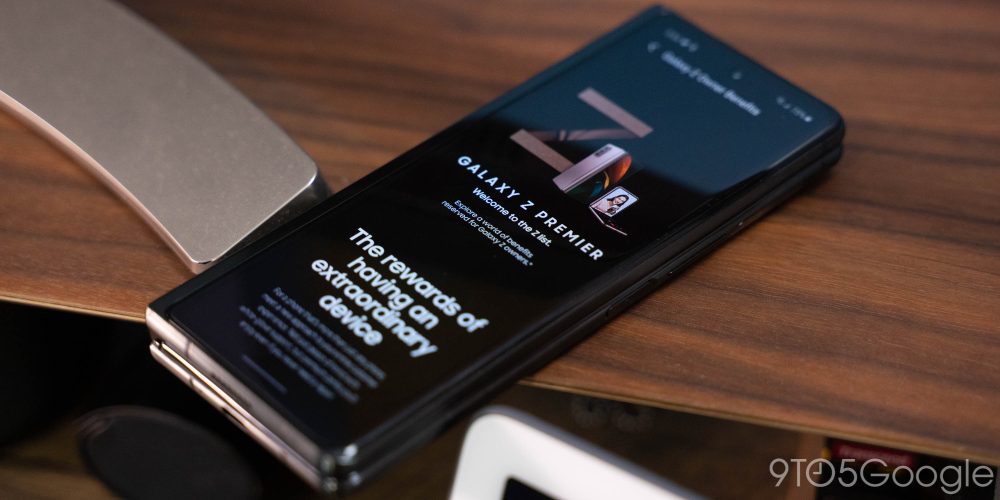
As a part of support, there’s also the experience Samsung gives people who buy this phone. Samsung was not exactly kind to Fold 2 buyers. The original Galaxy Fold shipped with free earbuds, a case, and more. The Fold 2 comes with only a charger in the box where a case really should have been the bare minimum of included freebies. Samsung does try to soften the blow with its “Premiere” perks, but most of those have proven completely useless in a year ravaged by COVID-19. Samsung probably won’t include a charger with the Fold 3, which is probably fine, but I’d really like to see at least a basic case in the box next time around.
Does any of that mean you shouldn’t buy a foldable yet? Honestly, yes. The Fold 2 is not a device for the average person. It’s for… well people like me. People obsessed with what’s new and what’s next. I’d recommend just about every other phone I’ve reviewed this year over the Fold to most people, not because this is a bad device, but because this form factor is not fully ready.
But that doesn’t mean it’s not the future. Foldables offer a new layer to how we use our phones, adding utility and functionality. It’s something that even five years ago seemed impossible, but with the Galaxy Z Fold 2, it really comes to life.
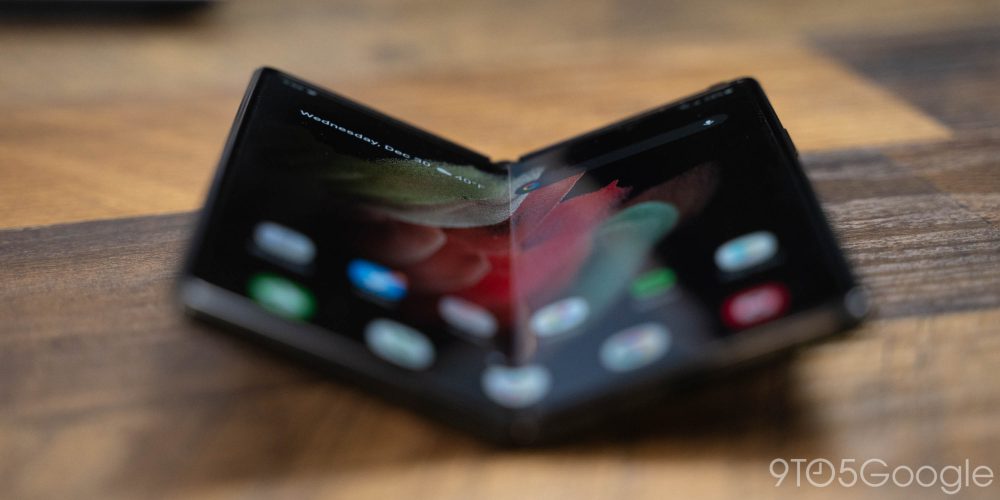
If you’re crazy enough to buy a Galaxy Z Fold 2, it’s available from , , Amazon, and from major US carriers.
Author: Ben Schoon
Source: 9TO5Google



